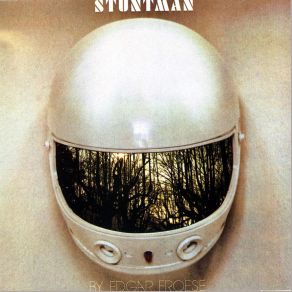Stuntman
Download links and information about Stuntman by Edgar Froese. This album was released in 1979 and it belongs to Ambient, New Age, Electronica, Rock, Pop, Alternative genres. It contains 6 tracks with total duration of 44:30 minutes.

|
|
|---|---|
| Artist: | Edgar Froese |
| Release date: | 1979 |
| Genre: | Ambient, New Age, Electronica, Rock, Pop, Alternative |
| Tracks: | 6 |
| Duration: | 44:30 |
| Buy it NOW at: | |
| Buy on iTunes $9.99 | |
| Buy on Amazon $7.74 | |
Tracks
[Edit]| No. | Title | Length |
|---|---|---|
| 1. | Stuntman | 4:18 |
| 2. | It Would Be Like Samoa | 10:46 |
| 3. | Detroit Snackbar Dreamer | 6:33 |
| 4. | Drunken Mozart In the Desert | 10:00 |
| 5. | A Dali-Esque Sleep Fuse | 8:33 |
| 6. | Scarlet Score for Mascalero | 4:20 |
Details
[Edit]Narrowing the gap between psychedelia and electronica, Tangerine Dream frontman Edgar Froese looks to the future in this clean and mostly satisfying release; all in all an important turning point for the artist. If nothing else, it marks a departure from his band's tendency to make an album out of two 20-minute epics; Froese ups the structure a bit with shorter pieces, and more of them. The opening (and title) track's thematic elements and major-key harmonizing run the risk of falling flat, but at just over four minutes, it's tolerable. The majestic qualities of "Stuntman" don't match up with the rest of the album's aesthetics, so Froese's stream-of-consciousness journey really begins with track two ("It Would Be Like Samoa") and keeps up a good pace from there, soloing over his carefully balanced sequencer beds and analog ambience. He uses his electric guitar sparingly, and there's almost no percussion (without his bandmates, the album is mostly too delicate in nature to support it), but there's no mistaking that Froese is the heart, soul, and defining sound of Tangerine Dream. All the elements come together with "A Dali-Esque Sleep Fuse," a miniature masterpiece (which happens to feature guitar solos and synthesized percussion) that brings the album to a near close, before the meditative synthesizer waves cool down the listener with "Scarlet Score for Mescalero," returning to the major-key simplicity of the album's opener, sort of a hangliding-into-the-sunset finale. The approach he takes on this album would set the standard for every subsequent album he would do, both as a soloist and as a bandmember. A little history in the making.